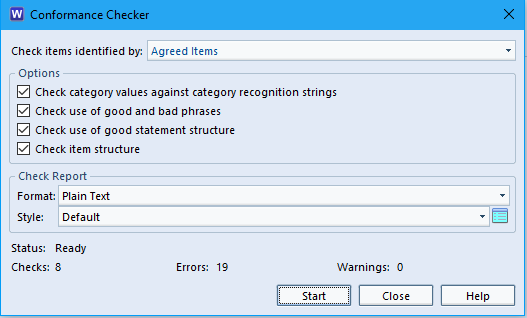Scenario
“Good morning, are our Wonder Widgets ready yet?”
“Urm, Yes…., I think so, I’ll just check with packaging”
“If you could just include your conformance report with the consignment, that would be great”
“Report, yes, I’ll add one…”

“Great, that just gives my team the confidence that everything from the mechanical safety standards to the power unit’s supply duration are all up to scratch. We’re happy to pay the extra for a fast courier if that means they will be here tomorrow”
“Mmm, power unit! urm, I’ll get on to it… Bye”
Dissecting the problem
Oh dear, wasn’t it clear that the power unit was part of the sourcing deal? Did you just forget? What was the required duration? Where can I source 300 on a Thursday afternoon?
Managing a supply chain is just like managing the individual requirements of an in-house project. Just because you don’t manufacture each item doesn’t mean you don’t have to manage its specification, purchase and conformance. Changes to your customer’s original specification need to be managed all along the chain. That’s only possible if the links are clearly defined.
By importing your customer’s original documentation as a set of requirements, creating items from your supplier’s specifications and linking them together you can ensure complete coverage of your project’s vital obligations.
Trace and control your customer’s needs with your supplier’s products, commodities, crops or services and ensure you’re not the weakest link in the supply chain.

